
That the aviation industry makes millionaires out of billionaires, is not quite a joke for India’s airline barons. The country’s aviation industry has seen its downs with SpiceJet almost throwing in the towel and Kingfisher’s CMD Vijay Mallya absconding after ringing up an unfathomable debt.
However, 2016 reports say that notwithstanding turbulent times, the industry has emerged stronger than ever (and even got SpiceJet back in the game). Here is why: Directorate General of Civil Aviation (DGCA) reveals that 151.31 lakh passengers flew domestic skies in February 2016, a 23.41 per cent growth from last year. In fact, March 2016 was the fifth consecutive month to show a 20 per cent increase from the preceding month in air passenger traffic.
A study by FICCI-KPMG evaluates the growth of the Indian aviation industry to climax into being the world’s third largest aviation market by 2020 after China and USA. “Enormous growth in domestic passenger traffic, substantial strengthening through government initiatives, decrease in global crude oil prices and airlines showing profits, indicates a significantly positive transformation for the Indian civil aviation market,” says Harshavardhan Neotia, president, FICCI.
The statement was made before the 2016 Union Budget, which announced a six per cent hike on excise duty levied on aviation turbine fuel (ATF). However, this is only a paltry instrument affecting the growth of the industry.
From the current 185 million passengers, of which 80 per cent constitute domestic flyers, the International Air Transport Association (IATA) estimates the number to collectively touch 378 million by 2020. Airlines have passed on their benefits from reduced air turbine fuel prices to their customers in the form of cheaper tickets. Further, increased railway fares have reduced the cost difference between economy flight and first class train tickets to roughly ₹700-₹800, thus making flights affordable to India’s new middle class since about five years.
Up until 2005, there weren’t many domestic flight options for Indians: government-run Air India that is the oldest in the country since 1947, and Jet Airways since 1992. Kingfisher Airlines came in with much pomp and deluxe service, it was the first to introduce inflight entertainment on domestic routes, and flying with the airline at a premium cost was some sort of social status. However, being unable to pay for the fancy facilities it offered, Kingfisher Airlines plummeted to its death in 2013.
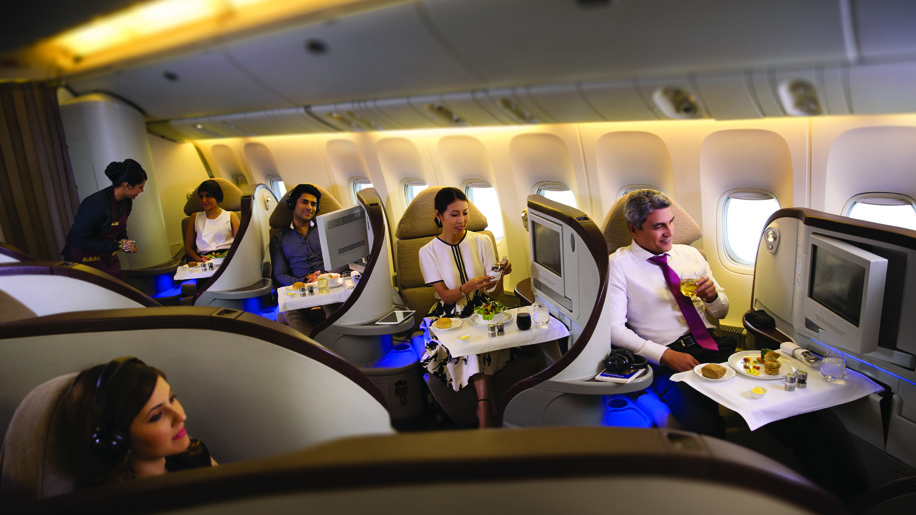
Comparatively, Jet Airways was sensibly patient. Expansions were made gradually. The airline took off as an air taxi operator, flew commercially with a fleet of four Boeing 737-300 aircraft in 1993 and launched international operations in 2004 with a flight to Colombo from Chennai. At the time Air Sahara was the only other private airline, which Jet Airways eventually bought in 2007 for ₹1,450 crore, taking its fleet of 62 aircraft to 89, thus earning it a 32 per cent share of the domestic aviation market. (SpiceJet, IndiGo, GoAir, Kingfisher Airlines and Air India formed 68 per cent of the market share).
Ahead of its time, JetLite (erstwhile Air Sahara) was operated as a 100 per cent all economy subsidiary of Jet Airways. In addition to this, the airline introduced a budget service — JetKonnect — that pretty much ran on the exact lines of a budget carrier. The only difference is that JetKonnect was not an airline, but a subsidised service that was also offered to Jet Airways passengers on a few routes, on certain days, through cheaper than usual tickets. On buying such a seat, you would forego all privileges enjoyed on a full-service airline. The service on JetLite, which was already a budget airline, automatically fell under the JetKonnect label.
A few years later, Jet Airways decided to focus on one type of service and two years ago dissolved the JetKonnect service and JetLite airline. It still needs to erase logos of the dissolved brands from its services though. In June a Business Traveller India staff travelled on a Jet Airways flight that had the JetKonnect branding on its boarding pass and aircraft. However, the service was operated by full-service Jet Airways — the only flight offering by the airline today that flies to 48 domestic and 20 international destinations with a fleet of 116 Boeing and Airbus aircraft.
In 2013, Jet Airways sold a 24 per cent stake to Etihad, with whom it has an ongoing codeshare agreement. This means Jet Airways passengers flying out of India have a wider reach through connecting flights.
All this while Jet Airways has reigned as the leading carrier in India until budget airline IndiGo pushed it to the second position in 2012.
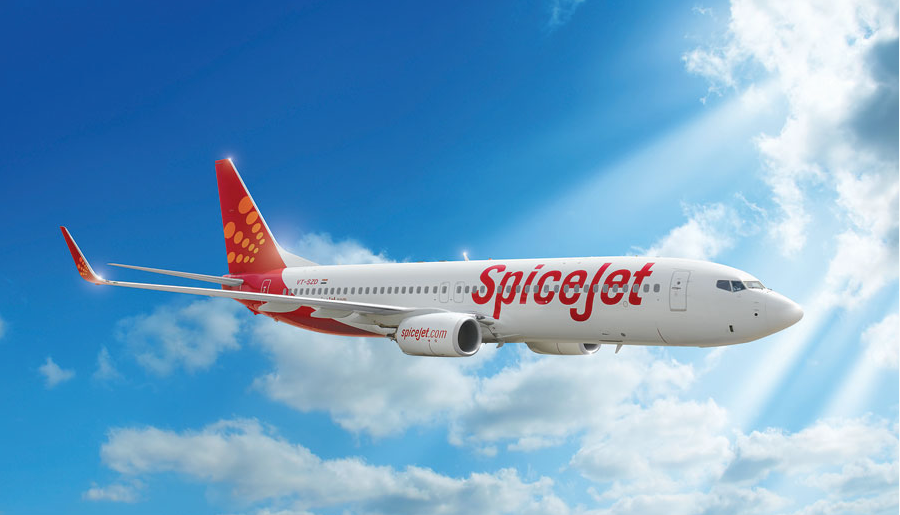
BUDGET CARRIERS
In spite of JetLite having been around, Indians weren’t entirely familiar with the concept of budget airlines until SpiceJet entered the field in 2005, closely followed by GoAir, and a year later by IndiGo. AirAsia India (budget) and Vistara (full-service) joined later. Travellers happily welcomed them as they didn’t care about the absence of inflight meals as long as they were given an option to fly cheap and on time to smaller cities. Sweating it out in trains on metro to non-metro routes was now plan B. Hence all three low cost carriers (LCC), hoping to cash in on this opportunity, strove to outdo the other.
While IndiGo and GoAir have managed to operate smoothly for the most part of their existence, SpiceJet hit turbulence headlong in 2014. Problems started much before that after it shifted focus on earning more by giving more. It defied the MBA jargon: maximise profits from fewer services. Instead, by 2014 it was deploying 58 aircraft to as many destinations as possible in a bid to outdo competition with a busier route map. And the ripple effect was disgruntled passengers due to a slack in customer service, which seemed unorganised at the time.
By 2010, SpiceJet had already started accumulating debt with unpaid bills from oil companies and the Airport Authority of India, besides losing interest of passengers. Sensing the urgency to please flyers, in 2013 it increased its free check-in baggage allowance to 20kg, while the other two stuck to the standard 15kg. Adding to this, SpiceJet often threw in flash sales — the year 2014 alone saw 25 flash sales. Of course, none of it earned the airline enough to cover its ₹1,031 crore in losses.
After Kingfisher Airlines’ exit was confirmed in 2013, because of an unpaid debt of over ₹7,500 crore, it was easy for sceptics to state that SpiceJet was hopelessly going down Kingfisher style.
However, things took a turn for SpiceJet when the management changed in early 2015. Chairman and Managing Director, Ajay Singh’s focus was to “go back to the basics”. In an interview with Hindustan Times, the national newspaper, he had stated that frequently rescheduling and cancelling flights made flyers lose confidence in the airline. “From a customer’s perspective,” Singh said, “one of the things that we needed to do was to say to people that book tickets in advance, because we will fly, and we will make sure that your flights will not get cancelled. For that we had to get capacity, and we got planes on wet lease.”
Wet lease means the lessor supplies the aircraft including cockpit and cabin crew, maintains the aircraft and pays for its insurance. The company that wet leases the plane pays the lessor as per the hours it is operated.
SpiceJet erased three domestic and two international destinations off its map. It focussed on on-time delivery to begin with. By December 2015, the airline made a profit of ₹238.40 crore, revenues rose by 11.3 per cent, and expenses fell by 21.9 per cent. The biggest relief came in the beginning of 2016 when air turbine fuels (ATF) costs dropped by 29.5 per cent, which make up about 40 per cent of an airline’s operating cost. (On June 1, ATF price rose by 9.2 per cent.)
If you have flown SpiceJet recently, the inflight announcement categorically acknowledges that despite having other choices available to you, you chose to fly with SpiceJet, and it thanks you for doing that.
Recently the carrier launched SpiceLounge to which passengers can buy access (₹600 for domestic and ₹1,200 for international) for a maximum duration of two hours. This includes: a buffet, bar, hot shower (international departures only), a selection of local and international newspapers, computer kiosks and wifi. In Guwahati, Varanasi and Jaipur, SpiceLounge is available only in the domestic departure area, and Delhi, Hyderabad, Bengaluru and Kochi have separate lounges for domestic and international passengers.
To keep passengers interested, SpiceClub, another add-on service that translates into free tickets is offered at ₹599. On recharging the SpiceClub card, one accumulates “additional usable credits which convert to usable currency [rupees] on the card.” Further, SpiceMax counters at airports upgrade tickets for ₹500-₹1,000 (depending on route and aircraft) for extra legroom and free onboard meals. Being a budget carrier, its aircraft aren’t configured into classes, but have the first three rows, wing exit rows and emergency exit rows fixed with more legroom. Selection from remaining seats is free.
Other add-ons are the self-explanatory “Bag Out First” for ₹100; and “Fly For Sure”, which for ₹299 guarantees you a flight within 24-hours of the airline rescheduling or cancelling your earlier booked flight.
About the increased 20kg free check-in baggage allowance, SpiceJet has gone back to 15kg — passengers don’t need to be coaxed into flying with them anymore, and lighter aircraft means burning less fuel.
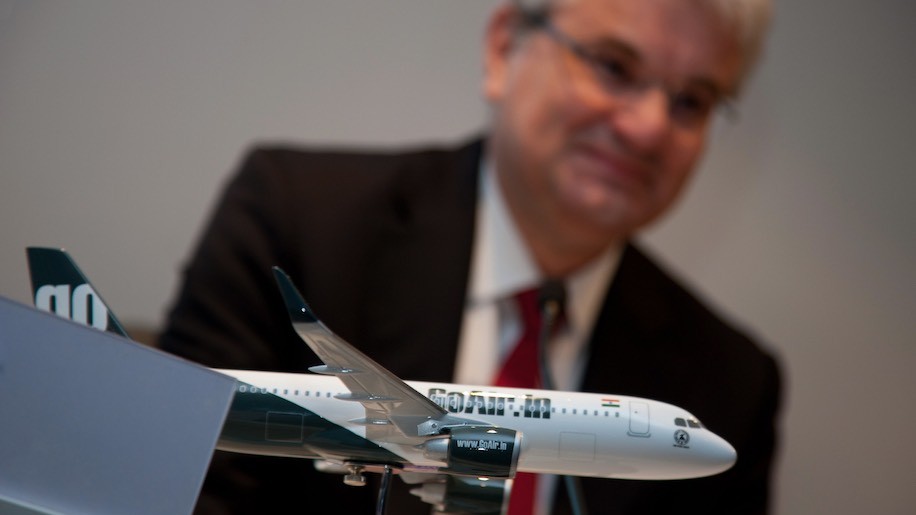
While SpiceJet has a bevy of add-ons, GoAir, which is just six months younger, hasn’t felt the need to “improvise”. The GoBusiness seats on the first two rows are slightly more expensive, depending on the route, because you’re paying for one and a half seat. This means, GoBusiness seats (available on select rows) are either the aisle or window seats. The middle seat is not sold, thus allowing more elbow room in addition to extra legroom.
GoAir has played cautiously since its launch, sticking to what it was meant to do — flying passengers from Point A to Point B with no frills attached. “We are not rushing to deliver marvellous results and then getting into trouble. Let’s grow step by step and be here for the next decade or so,” Giorgio De Roni, ex-CEO, GoAir had told Economic Times in 2013 when quizzed about its slower growth rate in comparison to IndiGo.
GoAir has been following the rules for operating an LCC to the last letter. It doesn’t allow seat selection during ticket purchase and online check-in. One must pay from ₹200-600 to get a seat of one’s choice. Middle seats are free.
While others fly their aircraft for about 11 hours a day, GoAir uses its planes for 13 hours daily. This, Roni had termed as “asset sweating” which has proved to be a better utilisation of its fleet.
Further, the no-frill airline whose passengers are predominantly males, has a large female crew, which it says is unintentional but helps keep the aircraft weight low. Measures to save fuel also include turning off one of the two engines when taxiing on the runway.
In comparison to IndiGo and SpiceJet that fly to 36 and 41 domestic destinations respectively, GoAir flies to 22, and is taking its time to expand its route map. To abide by the government’s rule to fly a certain percentage to poorly connected tier II cities and towns, instead of deploying its own aircraft on what may be loss-making routes, GoAir has opted to buy seats from regional airlines flying to such airports.
While its competitors fly to Gulf countries, GoAir’s focus remains on the domestic market. Besides, it didn’t have permissions to fly internationally under the 5/20 rule, until only recently.
The much debated 5/20 rule made it mandatory for airlines to fly domestically in India for five years and have a fleet strength of at least 20 aircraft before serving international routes.
Mid-June this year, India’s Civil Aviation Ministry changed the 5/20 policy. While airlines don’t need to complete five years of domestic operations, they do need to deploy 20 per cent of fleet capacity to domestic routes or have a fleet size of 20 aircraft, whichever is higher.
In 2012, GoAir had placed an order for 72 A320neo aircraft worth ₹32,400 crore, deliveries of which will be a game changer for the airline. It received its first A320neo in June, taking its fleet strength to 20 aircraft, enabling it to fly internationally.
At the time we went into print in July, GoAir was contemplating Europe as its international destination. This would require many operational changes as its fleet consist of narrow-body aircraft, not suitable for long-haul flights served by wide-body aircraft. It has yet to submit a formal proposal to the Minstry of Civil Aviation in this regard. If all goes as planned, GoAir will be the first budget carrier to fly between India and Europe. The Ministry of Civil Aviation is still awaiting from the airline.
In the meantime GoAir’s vision for the next five to seven years is to wax its presence with a wider network (focus remains on India), bigger passenger number, and more daily services.
Perhaps a wider network and more services will boost GoAir’s market share that was last calculated by the DGCA at 8.1 per cent in March, due to a comparatively small fleet — IndiGo has 109 and SpiceJet has 34 aircraft.
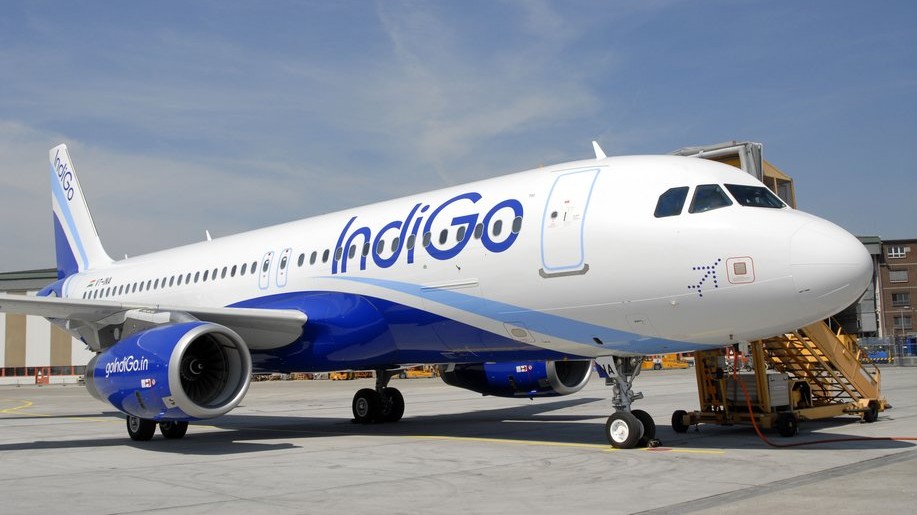
IndiGo is due to receive 430 A320neo in the coming years — the largest number of this model by any airline worldwide. It also holds the largest domestic aviation market share in India.
The airline that began as a budget carrier in August 2006 remains the same to date with onboard offerings — in-flight meals are sold to passengers and there is no in-flight entertainment.
As for what it does offer: by paying anything from ₹200-600, you can select a preferred seat at any time after purchase of the ticket. Check-in online within 24 hours before departure, and seat selection is free.
IndiGo offers a single class of economy service that allows its aircraft to have the maximum seating capacity of 180. It holds same for IndiGo’s international flights too. Not having different cabin classes takes the load off the airline to provide special or added services for its “privileged” few.
The airline continues to use the A320 with which it began operations — today its fleet size of 109 is made up of 105 A320 — and four A320neo. Unlike most other airlines, IndiGo has maintained the practice of placing bulk orders with the aircraft manufacturer as it has proved to earn it a better deal.
IndiGo says that using the same type of aircraft has not only helped keep expenses in check, but has also kept operations simple. “If you have two types of aircraft, you need to have different facilities for maintaining them and for training the crew.” Maintaining an average fleet age of a little over three years, ensures that much isn’t spent on maintaining ageing aircraft as they demand more attention than the younger ones.
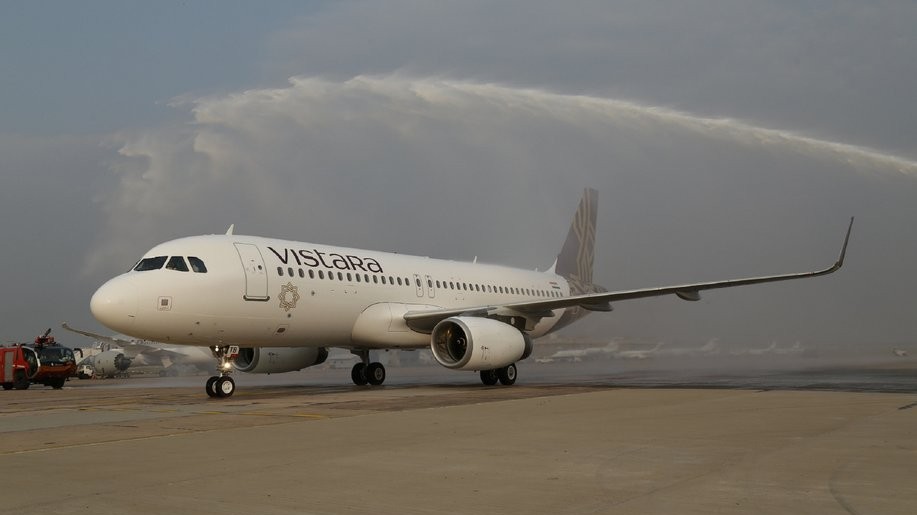
Further, the on-time performance (OTP) for IndiGo is much better than its contemporaries at 86.8 per cent as reported by DGCA in March 2016. SpiceJet and GoAir showed 84.1 per cent and 81.6 per cent OTP respectively. The best amongst all seven domestic airlines in India, however, is 91.5 per cent OTP by Vistara who launched its inaugural flight in January 2015.
Barely 19 months old and the result of a joint venture between Tata Sons and Singapore Airlines, Vistara has about 2.3 per cent of the market share.
In March 2015, Phee Teik Yeoh, CEO, Vistara told Business Traveller India, “India is yet to witness a real full service airline and we are here to set new industry benchmarks both in terms of service and operational excellence. We have introduced many firsts in our offerings, which include being the first to introduce Premium Economy in India. This month we are launching the pioneering technology of inflight wireless streaming in India. This is the first of its kind IFE (in-flight entertainment) solution that has a great potential for further enhancement.”
Just under four months into its launch, the full-service carrier announced that IFE will be available to its passengers. It is yet to launch the service though. This will be the first attempt after Kingfisher Airlines to offer IFE across all cabin classes.
As for premium economy seats, explaining the reason to have the cabin class, Yeoh had said: “I think we have hit a sweet spot. There are a lot of economy passengers who want to be treated differently, treasure personalised service and are ready to pay extra for that service.”
Vistara’s 12 aircraft have 24 premium economy seats, in addition to eight business class and 126 economy class seats.
While the budget airlines have shown more than 90 per cent occupancy for extra legroom seats, Vistara finds that premium economy is not a loss-making cabin for them. Economy class passengers not willing to pay more than 60 per cent for a business class seat, may consider a 20-30 per cent (on an average) more expensive premium economy for facilities such as priority check-in, bigger seats, and five kilos extra free check-in baggage allowance than the standard 15kg.
Business class passengers additionally have wider onboard meal options, Samsung tablets with preloaded content for its IFE, 30kg free check-in baggage allowance and lounge access (currently the only lounge is at Delhi airport).
Unlike its budget contemporaries, Vistara is looking to expand rapidly into India and offer better facilities as an added attraction. In its press release announcement in March, Vistara said that it was working on increasing its weekly flight operations by 25 per cent. From then to now it has added five more cities to its route map taking the total to 17 destinations.
To help in its expansion, the carrier is awaiting delivery of one A320 and seven A320neo so it can continue to add new routes and increase services on existing ones. Vistara says: “By the end of 2018 [with the new deliveries], we will have a fleet of 20 Airbus aircraft including seven A320neo.” This would also qualify the airline to fly internationally.
Plans for rejigging operations came when Vistara’s passenger load factor (PLF) as per DGCA reports for the last quarter of 2015 was 64 per cent, the lowest of them all. Low frequencies, fewer destinations and cabin configuration were reasons for low passenger traffic. As Vistara’s network grew, in March the PLF leapt to 74.7 per cent, close to Air India (75.7 per cent) and Jet Airways (79.1 per cent).
The airline follows a simple strategy of taking two factors seriously: customers’ demand and mandatory aviation obligations. With this, its focus continues to be on serving the corporate and leisure travel market where “there is a clear demand for our premium services”.
In terms of market share (refer to pie chart), Vistara is moving rapidly here as well, almost catching up with AirAsia India that launched six months prior to Vistara in June 2014.

AirAsia India is also under part ownership of Tata Sons that is in a joint venture with Malaysia-headquartered AirAsia. Its focus is on offering affordable travel, which is emphasised in its tag line “Everybody can fly”.
True to the nature of a low cost carrier, AirAsia India offers nothing other than the very basics of flying to its customers. The option for seat selection at the time of booking or during online check-in is offered from ₹100-800. Meals are sold on board, but a hot meal can be pre-booked when buying tickets for an additional price, depending on what’s been selected.
AirAsia’s add-on is the Premium Flex package that falls between ₹1,500 and ₹2,500, depending on the sector. Included are: baggage allowance of 20kg, free seat selection, express boarding, extra legroom, a hot meal that otherwise needs to be purchased, and flexibility in travel plans wherein a ticket holder can make up to two changes in flight schedule without an additional cancellation fee. This saves the traveller ₹3,000 as each cancellation costs ₹1,500. The package is probably more suitable for a traveller whose plans aren’t definite and whose flight duration is two hours or more.
On pushing the airline for future plans, it said that while it would like to increase its fleet strength and number of destinations, it didn’t want to comment unless decisions have been finalised. We do, however, know that AirAsia India wishes to fly international as it was one of the carriers that strongly argued against the 5/20 rule that has now been amended. Until then, it has a long wait with a fleet of six A320 aircraft flying to ten Indian cities.
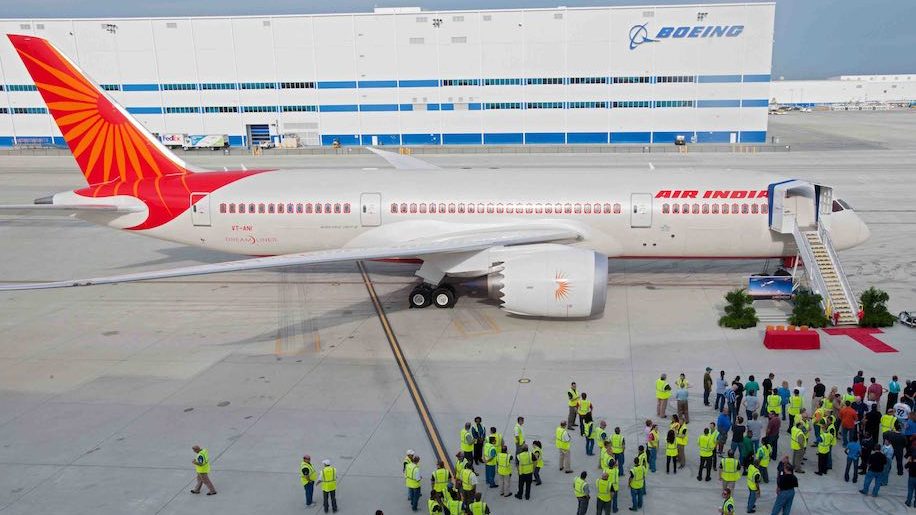
Air India looks up
The national carrier has been making losses since a few years until Mahesh Sharma came on board as the minister of state for civil aviation in 2014. He lists a number of factors that has put Air India in the red: interest cost and airport charges, increasing competition, available choice of budget carriers, and depreciation of the Indian rupee. Being asked to fly loss-making routes as part of the “Connect India” programme, could be an added factor.
In a letter to the Lok Sabha in April, he wrote that Air India is likely to suffer a total net loss of ₹2,636 crore in this financial year. It is half of what it suffered in the last financial year — ₹5,859.91 crore. He went on to state that the airline is expected to a earn a “modest operating profit” too, a first since the merger of Air India and Indian Airlines in 2007 that operated separately as international and domestic airlines respectively.
Air India’s new success can be owed to the drop in fuel prices to begin with, and the membership with Star Alliance (SA) that has helped keep its quality of practice in check. Besides, frequent fliers of SA are more likely to fly member airlines for connections and mileage, all working in the benefit of Air India. The airline has also replaced some of its old aircraft with newer ones. And lastly, the Finance Ministry’s equity infusion of ₹30,231 crore up to 2021 in Air India, against certain conditions and goals set out for the airline, adds to cushioning its losses.
Sharma’s plans to turn the airline around with new uniforms, better customer service, more routes and increased services look, as of now, promising for Air India’s future.
Air India also operates a low cost subsidiary — Air India Express that launched in 2005. It mainly operates from South India to the Middle East and Southeast Asia.
Pending orders from Airbus
IndiGo: 430 A320neo
GoAir: 71 A320neo
Vistara: four A320 and seven A320neo
Jet Airways: five A330-200
Under the rule, and with Aibus working on completing deliveries of 520 aircraft to its Indian customers, India already has two of her LCCs serving international skies — SpiceJet and IndiGo. GoAir, as mentioned earlier, will join them by next year hopefully.
In five years, we may see more competition in the sky amongst Indian budget carriers, making international travel now a reality to India’s new middle class.
Passengers carried in February 2016 by leading domestic airlines
Air Asia 1,66,829
Air India 10,85,634
GoAir 5,95,139
IndiGo 27,54,131
Jet Airways 13,66,421
SpiceJet 9,76,302
Vistara 1,48,657
Source: DGCA
Number of cities on the domestic route map
Air India – 54
AirAsia India – 10
GoAir – 22
IndiGo – 36
Jet Airways – 48
SpiceJet – 42
Vistara – 17








